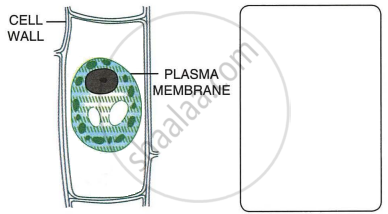Advertisements
Advertisements
प्रश्न
The state of a cell in which the cell wall is rigid and stretched by the increase in volume due to the absorption of water is called.
पर्याय
Flaccidity
Turgidity
Capillarity
Tonicity
उत्तर
Turgidity
APPEARS IN
संबंधित प्रश्न
A plant cell may burst when :
The diagram below represents a process in plants. The setup was placed in bright sunlight. Answer the following questions:

a) Name the physiological process depicted in the diagram.
Why was oil added to the water?
b) When placed in bright sunlight for four hours, what do you observe with regard to the initial and final weight of the plant? Give a suitable reason for your answer
c) What happens to the level of water when this setup is placed in:
- Humid conditions?
- Windy conditions?
d) Mention any three adaptations found in plants to overcome the process mentioned in (i).
e) Explain the term ‘Guttation’.
Give the equivalent terms for the following:
Loss of water through a cut stem.
Give reasons for the following:
If you sprinkle some common salt on grass growing on a lawn, it is killed at that spot.
Give reason for the following:
It is better to transplant seedlings in a flower-bed in the evening and not in the morning.
Give reason for the following:
A plant cell, when kept in a hypertonic salt solution for about 30 minutes, turns flaccid.
A leaf cell of a water plant was placed in a liquid other than pond water. After sometime, it assumed a shape as shown below:

- Give the term for the state of the cell it has acquired.
- Name the structure which acts as a selectively permeable membrane.
- Comment on the nature (tonicity) of the liquid surrounding the cell.
- Name any one feature of this plant cell which is not present in an animal cell.
- Redraw in the space provided, the diagram of the cell if it is soon placed in ordinary water for some time.
When the cells of a plant are fully distended, the condition is called ______.
Addition of salt to pickles is a method of killing the bacteria by ______.
